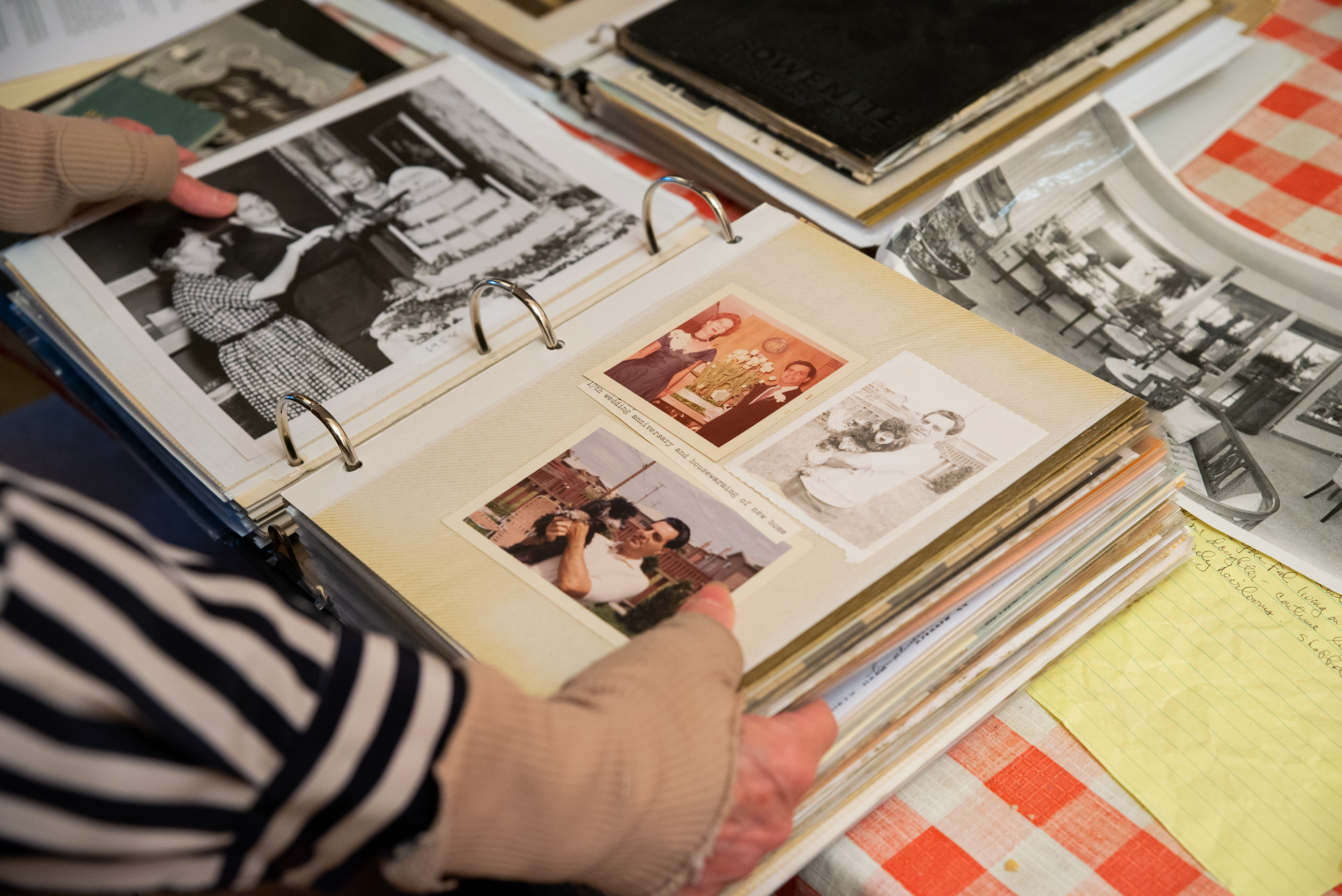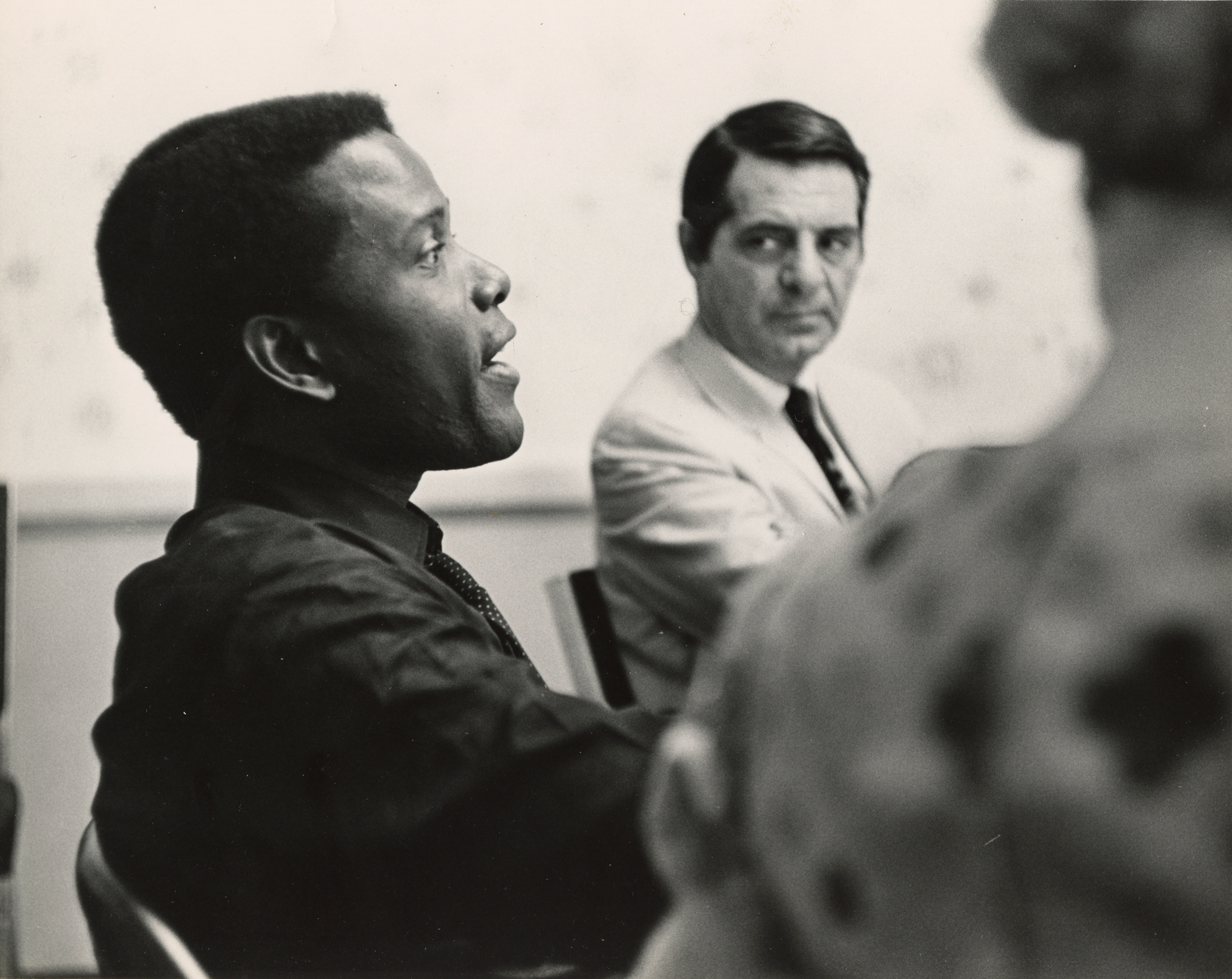You’re likely familiar with the city’s most famous families — the Palmers, the Fields and the McCormicks — whose wealth and influence made their mark on Chicago.
But one Curious City listener wanted to know about some of the “everyday families” that have lived in Chicago continuously, for generation after generation. Families who shaped — and were shaped by — this city.
That’s what led us to the Atkinsons and the Bernsteins.
These two families made their homes on Chicago’s South Side starting in the 19th century.
Though they come from different places — one, a family of Eastern European Jewish migrants; the other, one of the earliest Black families to arrive in Chicago — and their descendants have never met, their stories cut across Chicago history and intersect in surprising ways. Members of these two families were deeply intertwined with the history of Chicago's abolitionist movement, film and entertainment scene, transportation industry and foundational religious institutions. And both were impacted, in different ways, by discriminatory housing practices in the mid-20th century.
They show us, through the separate threads of their stories, that every family history is at once a history of the place that they call home.

The Atkinsons: The 13th Black family to settle in Chicago
The Atkinsons were just the 13th Black family to settle in Chicago when Isaac and his wife, Emma Jane, arrived in 1847 from Virginia. Their great-granddaughter Michele Madison is the last remaining keeper of the family history. She gave Curious City a glimpse into 180 years of the Atkinsons in Chicago.
Emma Jane Atkinson was part of the “Big Four” — a group of abolitionist women who helped run the Underground Railroad out of Quinn Chapel AME Church, the first Black congregation in Chicago. Black people seeking freedom in northern cities like Chicago could be arrested and sent back into bondage because of the Fugitive Slave Act. Born of free parentage, Emma Jane had some degree of protection from arrest, and this allowed her to help countless others find shelter and safety through her work.
Isaac, who was half Scottish and half Cherokee, founded his own transportation company. It was a system of horse-drawn long carriages, called omnibuses, that picked up passengers and took them along the muddy, unpaved roads of 19th century Chicago. Isaac used his financial success to purchase 20 plots for the Atkinsons in Graceland Cemetary, which helped further establish Atkinson roots in Chicago and placed them alongside some of the city’s most prestigious families.
The Atkinsons threw parties and did business with other Black families who had also moved to Chicago during the mid-19th century, and eventually an exclusive society started to form. By 1904, the families formalized this network and called it the “Old Settlers Social Club.”
This club was made up of about 3,500 families whose members included businessmen, politicians and working class craftsmen. The only way to become a member was to be a part of a Black family that had been in Chicago for at least 30 years. One prominent member was Michele’s Uncle Petie, who took great care in maintaining the Atkinson family reputation within the community. Michele says he made sure that she and her older sister Grace knew how to present themselves in public.
“My sister was actually presented to society, when there was such thing as a Negro society to which to be presented. So she came out at 16,” Michele recalls. “Back in the day, people would introduce you to other families, and try to see who was marriageable in one family to another family, very old school.”

Michele was six when she moved into the family’s new home in Woodlawn, where she lives to this day.
“I love it here,” she says. “I come down that street and my car, and I smile. … If you come in the summer, there's flowers on the porch, and my catalpa trees have grown. And it just makes me feel, wow, that's home. This is home to me.”
Michele plans to donate her home to a local organization that runs Community Integrated Living Arrangements, or CILA homes, for young women with intellectual disabilities. So even though there won’t be Atkinsons living there, the importance of this house in Woodlawn will live on.
Click here to dive deeper into the Atkinson family timeline.

The Bernsteins: Early Jewish migrants to the Southeast Side
Nathan and Nettie Bernstein arrived in South Chicago in 1888 from Marijampolė, Lithuania. Like many Eastern European Jewish families at the time, they moved to escape antisemitism and to find economic opportunity in the U.S.
Nathan and Nettie’s grandson Chuck, his wife Roberta (Lesner) Bernstein and their son Aryeh, were our guides for this family’s story of six generations of Jewish life in Chicago. They explained that Nathan’s first job here was selling dry goods, and that he was an early active member of the very first Jewish congregation on the Southeast Side, called Bikur Cholim.

In their Hyde Park living room, Roberta opened up a big album, stuffed full of newspaper clippings and photos of her father alongside some of the biggest names in entertainment at the time: Sidney Poitier, Julie Andrews, Alfred Hitchcock and many more.
“As a result of [his work in the entertainment scene], his world was much more integrated than the worlds of almost anybody else in 1950s America,” Aryeh says.
In the 1960s, not long after Sam moved the family to the Southeast Side neighborhood known as Pill Hill, he started getting calls from realtors telling him to sell their home. Thousands of Black families seeking a better life were moving from more rural areas in the American South to northern cities, and real estate developers were working to profit off of this demographic change.
Aryeh says his grandfather would get calls pressuring him to sell late into the night.
“‘Another one moved on to the block, Lesner, you better sell now,” Aryeh recounts the callers saying. “‘I'll give you cash for your house. Now, if you don't go now you're gonna lose everything.’”
Developers would buy these homes from white families willing to sell and rent them to Black families without investing in the upkeep of the houses. And due to a combination of banks denying mortgages and a G.I. Bill that excluded Black veterans from low cost mortgages and low interest loans, most of those Black families were unable to buy those houses. But even against all of these aggressive calls to sell, Sam kept his family firmly planted in Pill Hill.
Aryeh grew up, became a rabbi and moved away from Chicago. But after 15 years, he returned, pulled back by the familiarity of the Southeast Side.
“Even just the names of the streets that only exist on the far east side, from South Shore down Chapelle, Oglesby and Bennett, there's a kind of emotional resonance to just the names of those streets,” Aryeh says. “Anytime I'm running an errand in South Shore in that area, there's a certain kind of tingling … it's a weird feeling of the accessibility of the old country.”
He and his wife Sarah had their daughter, Avniel, in August 2021 — almost 135 years to the week since Aryeh’s ancestors came over from Lithuania in 1888.
Click here to learn more about Aryeh’s family’s journey across time on the South Side.
If you want to learn more about the Atkinson family, their records are housed at Chicago Public Library's Vivian Harsh Collection and the Chicago History Museum. Sam Lesner’s records are housed at the Newberry Library. Interested in finding out more about your own family history, or the history of your neighborhood? There are dozens of heritage institutions across Chicago — take advantage of yours.
Anna Mason is a journalist and producer living in Chicago, specializing in local history and archive media. Follow Anna @annadotmason




